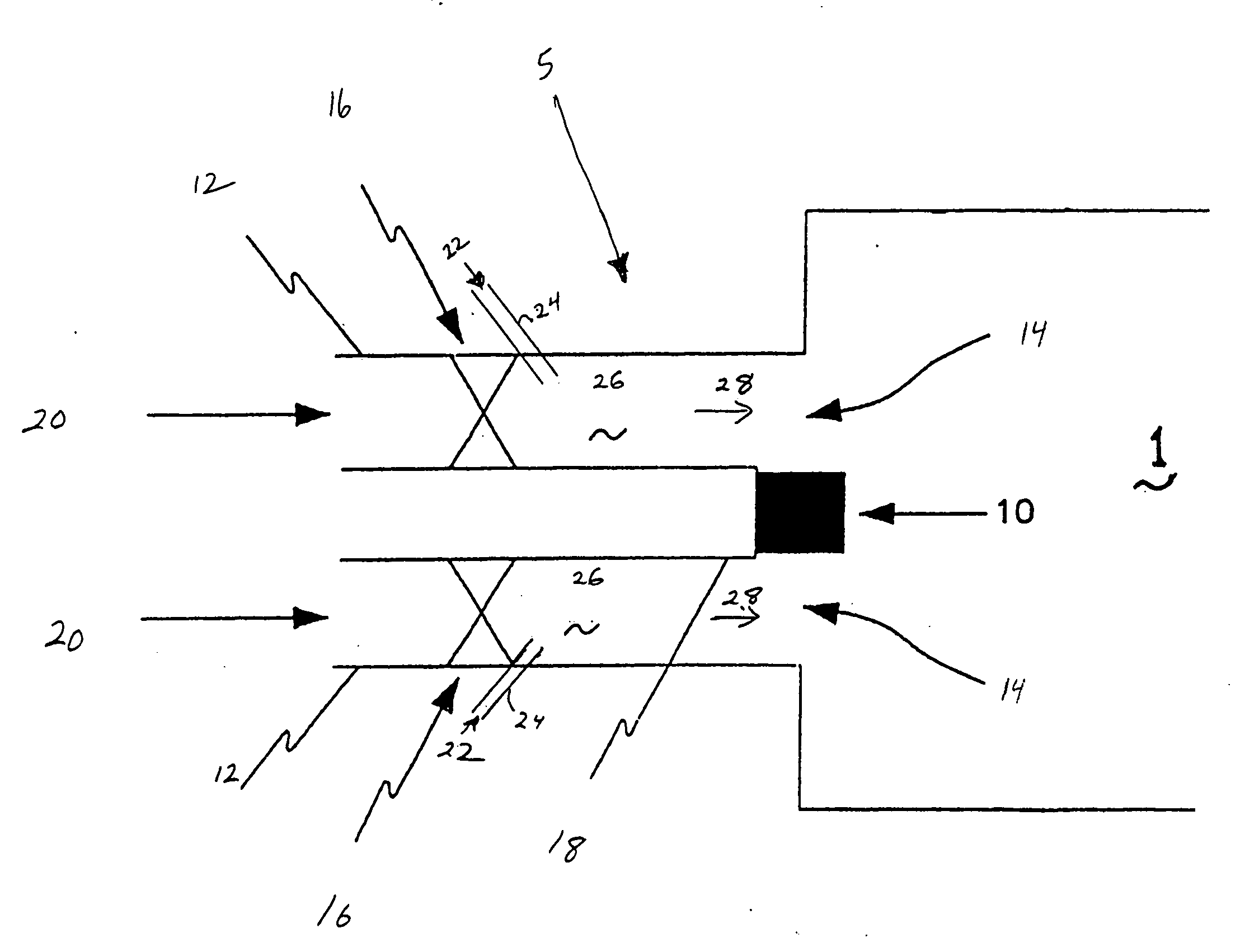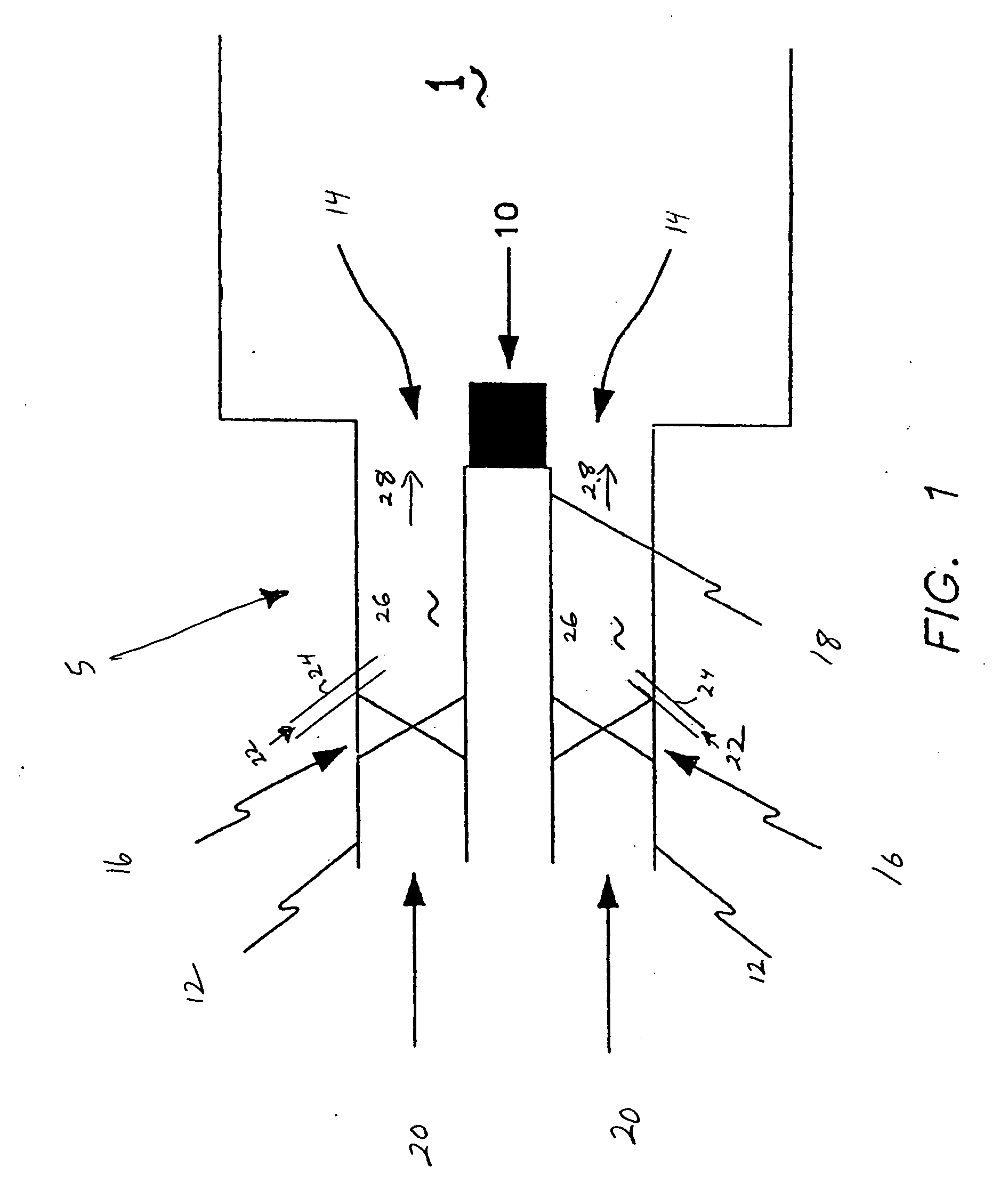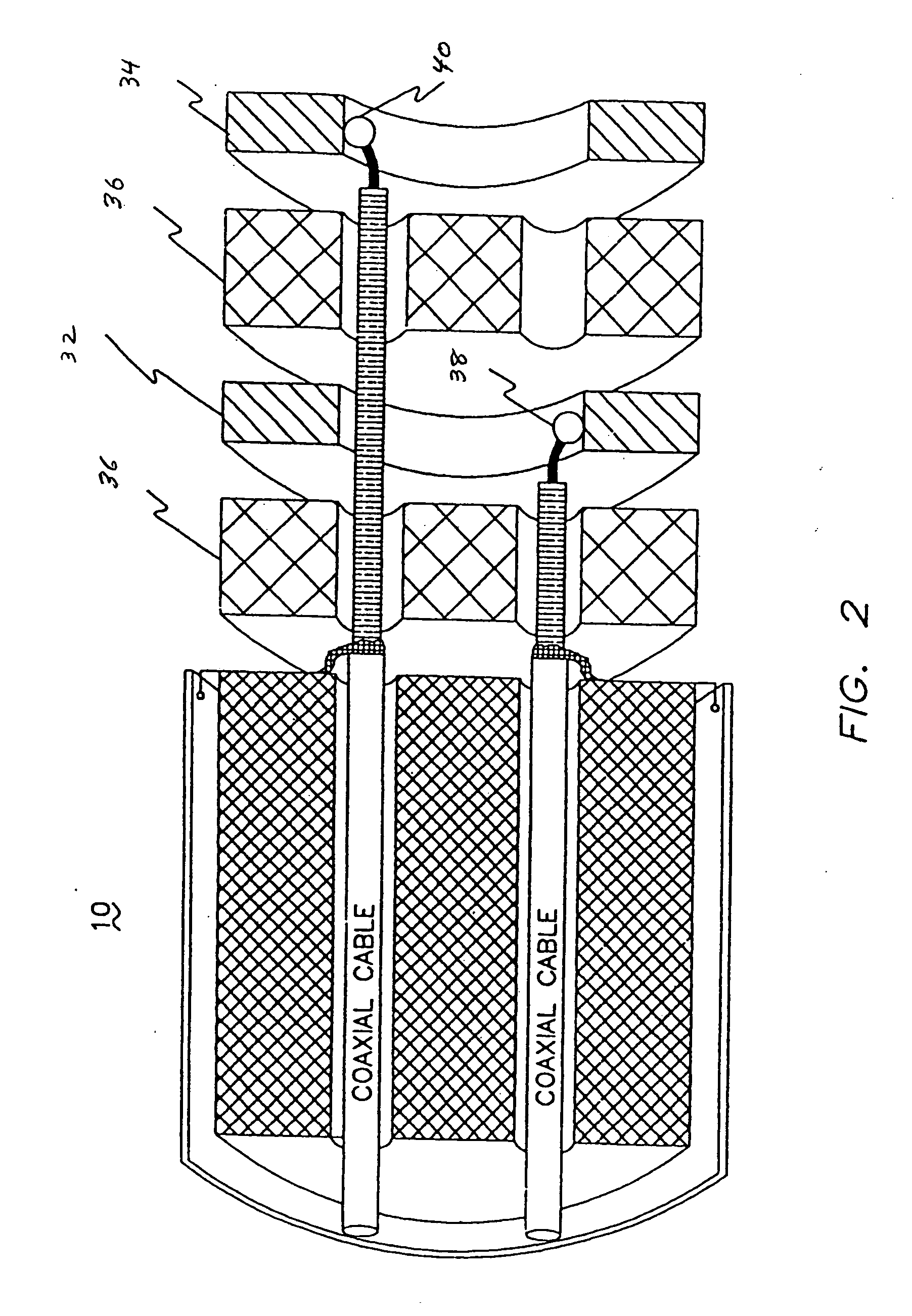On the other hand, incomplete combustion of a fuel generates
carbon monoxide (CO).
In practice, changes in flow splits caused by manufacturing tolerances or
engine wear can compromise emissions performance.
Furthermore, unexpected changes in fuel composition, or momentary changes in
fuel delivery can lead to problems with
flame anchoring.
Serious problems can result when flames reach an
extinction limit, or blowout.
Currently, there are no commercial methods to sense when lean blowout may be incipient.
The measurement of combustion parameters when coupled with a combustion control strategy presents numerous unique issues due to the extreme
process conditions under which the
combustion process occurs.
Further, these types of
flame monitoring devices do not provide information on the combustion product mixture.
It may be difficult to determine whether the burner is operated under fuel rich, fuel lean, or stoichiometric (exact amounts of fuel and oxidant to obtain complete combustion of the fuel,
equivalence ratio equal to 1) conditions.
Further, flame detectors based on the measurement of selected wavelengths of the
electromagnetic spectrum are typically self contained devices that are not always integrated in the burner design.
They are generally complicated and expensive pieces of equipment that require careful maintenance.
When
compressed air is used, uncontrolled amounts of air are introduced in the furnace and may contribute to the formation of
NOx.
Water jackets are subject to
corrosion when the furnace
atmosphere contains condensable vapors.
Thermocouples and bimetallic elements when used to monitor the
combustion process within the fuel nozzles, suffer from the disadvantages of providing only localized point measurements and generally slow reaction times (typically 2 to 3 seconds), which can lead to problems and possible failure of the fuel
nozzle before detection.
However, typical
oxygen sensors, such as zirconia-base sensors that are commercially available have limited lifetime and need to be replaced frequently.
One difficulty met when using these sensors is a tendency to plug, especially when the exhaust gases contain volatile species or
particulates.
Further, when more than one burner is utilized, a drawback of global combustion control is that it is not possible to know whether each individual burner is properly adjusted or not.
Although very efficient, these techniques are not always economically justified.
While monitoring the flame
light emission can be easily performed in well controlled environments typically found in laboratories, implementing flame
light emission monitoring on industrial burners used in large combustion units is quite difficult in practice, resulting in a number of problems.
Second, the environment is difficult because of excessive heat being produced by the burner.
Finally, the environment may be dusty which is not favorable for the use of optical equipment except with special precautions, such as gas purging over the optical components.
Typically this situation often leads the operator to use a large excess of air to avoid the formation of CO.
Further, typical combustion control strategies do not account for the air intakes that naturally occur in industrial burners that bring in unaccounted quantities of oxidant into the combustion zone, nor does this control scheme account for the variation of the air intakes caused by pressure changes in the burner.
Another drawback is that the
response time of the feed-forward regulation loop is generally slow, and cannot account for cyclic variations of oxidant supply pressure and composition that occur when the oxidant is not
pure oxygen.
Other drawbacks of combustion control strategy result from variations due to fuel composition and pressure.
 Login to View More
Login to View More  Login to View More
Login to View More 


